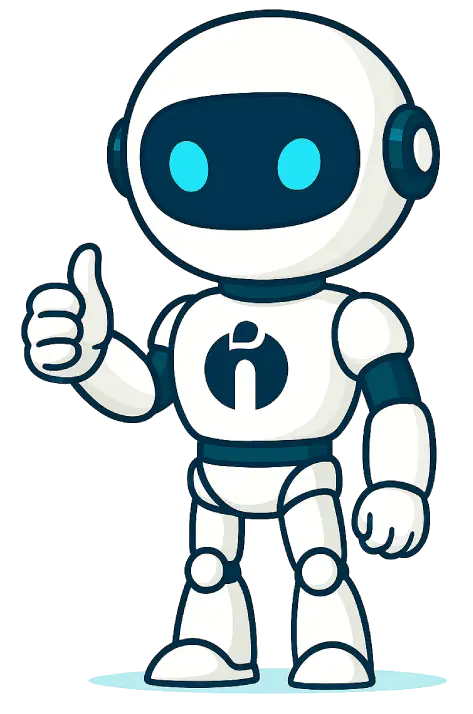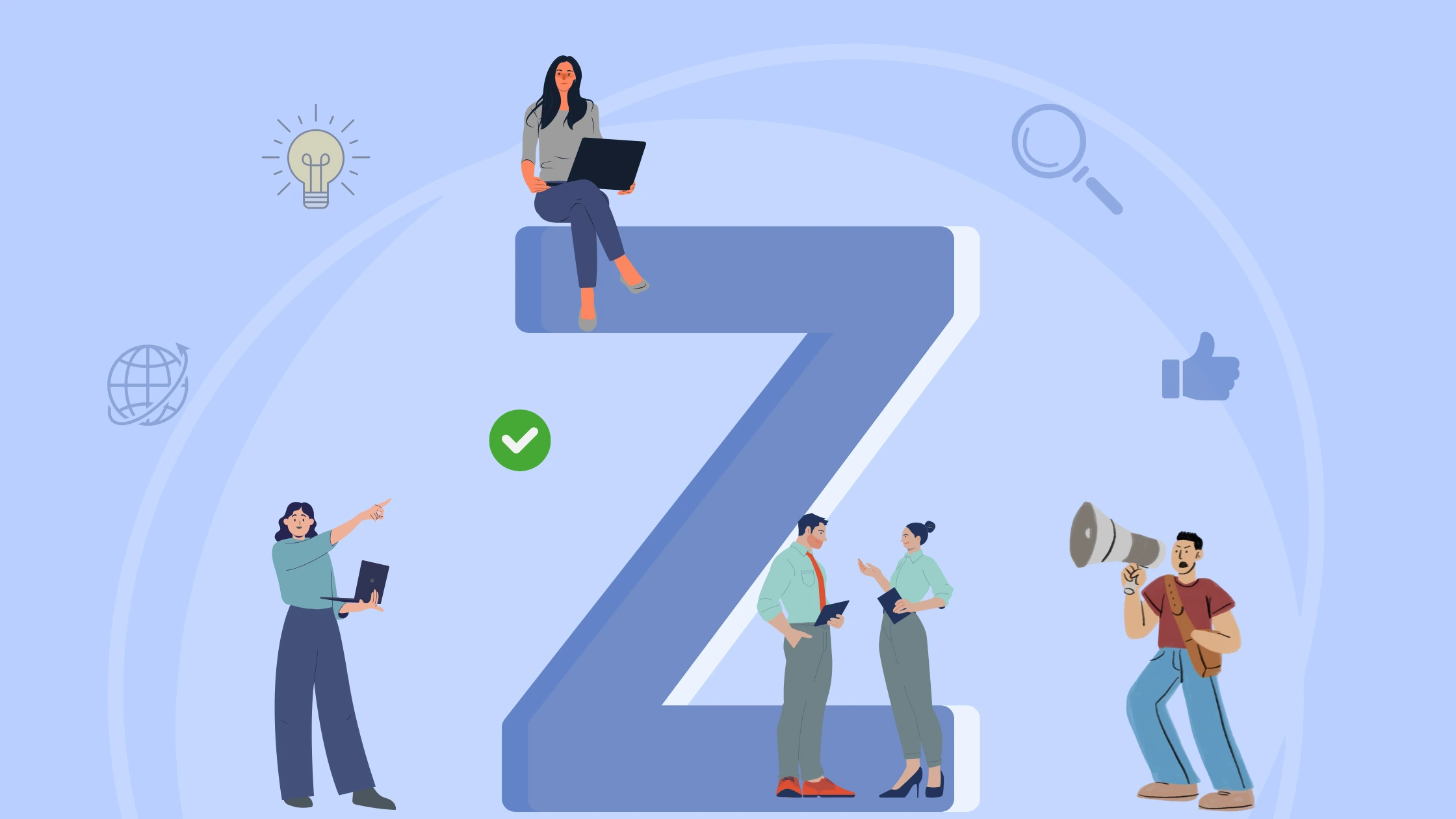The hiring landscape has transformed dramatically over the past few years, bringing unprecedented convenience to recruiters and candidates alike. However, this digital revolution has also created new vulnerabilities. Recruiting scams have surged, with fake candidates infiltrating hiring pipelines and costing companies thousands of dollars in wasted resources. The good news? Artificial intelligence is emerging as a powerful ally in the fight against recruitment fraud.
TL;DR:
- Recruitment scams are increasing as fake candidates exploit digital hiring tools.
- 59﹪of hiring managers suspect applicants of using AI to misrepresent themselves.
- Common scams include fake resumes, stolen identities, and deepfake interviews.
- AI-powered verification cross-checks credentials and detects fraud early.
- Companies report up to 85﹪ fewer hiring-related fraud incidents using AI tools.
- Combine AI screening, verified job platforms, and recruiter training for safer hiring.
- Build a secure, trustworthy workforce by spotting fake candidates before they cost you.
Why Recruitment Scams Are Rising
The shift to remote work and digital hiring platforms has inadvertently opened the floodgates for sophisticated recruiting scams. When companies embraced virtual interview technologies and online screening processes, fraudsters quickly adapted their tactics. Today's fake candidates don't just submit bogus resumes-they create elaborate digital personas complete with fabricated work histories, stolen credentials, and even deepfake technology to pass virtual interviews.
Common types of recruiting scams include identity theft, where someone assumes another person's credentials; resume fabrication with falsified degrees and work experience; and credential fraud involving fake certifications from non-existent institutions. Some sophisticated scammers even create entirely fictional employment histories at companies that are difficult to verify. The rise of AI in recruitment has forced both legitimate recruiters and fraudsters to up their game, creating an ongoing technological arms race.
How Fake Candidates Slip Through the Hiring Process
Traditional screening methods rely heavily on manual verification processes that are both time-consuming and prone to human error. Recruiters often lack the resources to thoroughly investigate every candidate's background, especially when dealing with high-volume recruiting scenarios.
Fake resumes and profiles slip through because they're designed to exploit these weaknesses. In fact, around 59﹪ of hiring managers say they've suspected a candidate of using AI tools to misrepresent themselves during the hiring process. This growing trend highlights how easily modern fraudsters can manipulate digital hiring systems, making traditional verification methods no longer enough. Fraudulent candidates know exactly which keywords to include, how to format documents professionally, and which red flags to avoid.
Consider this realistic scenario: A mid-sized technology company posts a senior developer position. Within days, they receive an impressive resume from a candidate claiming ten years of experience at reputable firms. The online interview questions are answered confidently, references are checked out superficially, and the candidate even completes a technical assessment with flying colours. Only after hiring do they discover the candidate used stolen credentials and had someone else take the technical test. By then, the company has already invested weeks of onboarding time and exposed sensitive systems to a potential security threat.
How AI Helps You Spot the Fakes
AI-powered recruitment fraud detection works by analysing patterns and anomalies that human reviewers might miss. These sophisticated systems don't just scan resumes for keywords-they cross-reference information across multiple databases, verify credentials in real-time, and flag inconsistencies that suggest deception.
Modern AI screening tools examine candidate data through multiple lenses simultaneously. They verify educational credentials against official institutional databases, cross-check employment histories with public records and professional networks, and analyse communication patterns for signs of inconsistency. When a candidate claims experience at a company, AI can instantly verify whether that company existed during the stated time period and whether the job title aligns with industry standards.
What makes AI particularly effective is its ability to detect subtle red flags. For instance, if a resume shows suspiciously perfect progression without any career gaps or lateral moves, AI algorithms flag it for review. Similarly, when conducting one-way video interviews, AI can analyse speech patterns, facial movements, and response authenticity to identify potential deepfakes or coached responses.
Essential AI Tools for Recruitment Security
The market now offers several categories of AI-powered tools designed specifically for recruitment scam prevention. Background verification platforms use machine learning to automatically validate employment history, education credentials, and professional licenses against authoritative sources. These systems can process verification requests in minutes rather than days, flagging discrepancies immediately.
Identity verification software employs biometric analysis and document authentication to ensure candidates are who they claim to be. These tools can detect photo manipulation, verify government-issued IDs, and even perform liveness checks during video interview tips for candidates sessions to prevent impersonation.
Resume fraud detection systems analyse document metadata, writing patterns, and content consistency to identify fabricated or plagiarised resumes. They compare submission details against known fraud patterns and can even detect when multiple candidates submit suspiciously similar applications.
Behavioural analysis platforms monitor candidate interactions throughout the hiring process, identifying unusual patterns that might indicate fraud. If someone suddenly changes their communication style or demonstrates knowledge inconsistent with their claimed background during Structure interview sessions, these systems flag the anomaly.
Why Using AI Makes Recruitment Safer and Smarter
Implementing AI-powered fraud detection transforms your hiring process in several critical ways.
First, it provides strong fraud prevention by catching fake candidates before they enter your pipeline, saving countless hours and resources that would otherwise be wasted on fraudulent applicants. Companies using AI recruiting fraud detection report up to 85﹪ reduction in hiring-related fraud incidents.
Second, AI ensures reliable candidate profiles by automatically verifying credentials and cross-referencing information across multiple trusted sources. This means every candidate who moves forward in your process has been thoroughly vetted, giving hiring managers confidence in their decisions.
Third, AI enables faster, accurate hiring decisions by eliminating the bottlenecks associated with manual verification. What once took weeks can now happen in hours, allowing you to secure top talent before competitors while maintaining security standards. This speed advantage is particularly valuable when reducing time to hire without compromising quality.
Practical Tips to Prevent Recruitment Scams
Beyond implementing AI tools, recruiters should follow several best practices to minimise exposure to recruiting scams. Always use verified platforms for job posting that have built-in security features and candidate screening mechanisms. Popular job boards with established verification processes make it harder for fraudsters to operate.
Make AI-powered validation mandatory at every stage of your hiring process. Don't wait until final rounds to verify credentials. Integrate automated background verification and identity verification from the initial application stage. When conducting asynchronous interviews, ensure your platform includes fraud detection capabilities.
Maintain transparent, comprehensive digital hiring records that document every verification step. This creates an audit trail that not only deters fraud but also protects your organisation legally. If a fake candidate does slip through, detailed records help identify where the process failed and how to improve it.
Educate your hiring team about common recruitment fraud tactics and warning signs. Even the best AI systems work better when paired with informed human judgment. Regular training ensures your team knows when to dig deeper and what questions to ask.
Real Results - When AI Outsmarted Recruiting Fraud
A rapidly growing fintech startup faced a serious problem-they discovered that three of their recent hires had fabricated their credentials entirely. The incident cost them over $200,000 in wasted salaries, severance, and the opportunity cost of delayed projects. Desperate to prevent future occurrences, they implemented comprehensive AI-powered candidate verification tools integrated with their existing best video interview software.
Within the first three months, the system flagged 47 suspicious applications that would have likely passed traditional screening. In one notable case, a candidate claiming to have graduated from a prestigious university was immediately identified as fraudulent when AI cross-referenced the degree against official records. Another applicant who appeared perfect on paper was flagged when behavioural analysis detected inconsistencies between their written communication and video responses during the benefits of one-way video interviews screening.
The company's hiring accuracy improved dramatically, and they haven't experienced a single fraud incident since implementation. More importantly, the automated verification process actually sped up their time-to-hire for legitimate candidates, as the AI handled verification tasks simultaneously rather than sequentially.
The Future of AI in Recruitment Fraud Detection
The next generation of recruitment fraud prevention is already taking shape. Advanced AI systems will soon offer real-time, multi-factor verification that happens continuously throughout the hiring process rather than at discrete checkpoints. Predictive analytics will identify fraud risks before candidates even complete their applications, analysing behavioural patterns and digital footprints to assess authenticity scores.
We're moving toward integrated verification ecosystems where AI recruitment agents work seamlessly across platforms, sharing verified candidate information securely while respecting privacy. Blockchain-based credential verification may soon provide immutable records of education and employment that can't be falsified.
Perhaps most exciting is the development of adaptive AI that learns from each fraud attempt, constantly evolving to stay ahead of new scam tactics. As fraudsters develop more sophisticated methods, AI systems will become smarter, creating a protective shield that grows stronger over time. This continuous learning ensures that creating diverse, secure workplaces remains secure and authentic.
Conclusion
Recruiting scams represent a serious threat to modern hiring processes, but AI technology provides powerful defences that are both effective and practical. By implementing AI-powered verification tools, following security best practices, and staying informed about emerging fraud tactics, recruiters can protect their organisations while maintaining efficient, candidate-friendly hiring experiences.
The investment in AI fraud detection isn't just about avoiding losses-it's about building trust in your recruitment process and ensuring every hire contributes genuine value to your organisation. Start exploring AI verification solutions today and transform your hiring process into a fortress against recruitment fraud.
When you guide and recruit top talent with confidence, knowing that every candidate has been thoroughly authenticated, you're not just filling positions-you're building a stronger, more secure workforce for the future.
Frequently Asked Questions -FAQ
1. What are recruiting scams?
Recruiting scams occur when fake candidates or fraudsters infiltrate hiring pipelines by lying about credentials or identity.
2. Why are recruitment scams increasing?
The shift to remote hiring and digital platforms has made it easier for fraudsters to create convincing fake profiles and exploit weak verification processes.
3. How can AI help detect fake candidates?
AI tools analyse patterns, cross-check credentials in real-time and flag inconsistencies that manual screening often misses.
4. What are common signs of candidate fraud?
Indicators include flawless resumes with no gaps, impersonated interviews, exaggerated work history or credentials, and unrealistic job experience.
5. What practical steps should recruiters take to prevent fraud?
Integrate AI-enabled verification early in the hiring process, maintain transparent digital records and train teams to recognise fraud tactics.













